The Orkney Islands’ Mainland is the largest island in the archipelago and overflows with sights to see and activities to do. The island is bisected by Kirkwall, Orkney’s largest town, and the west Mainland receives the lion’s share of visitors’ attention because it’s home to the UNESCO World Heritage Site The Heart of Neolithic Orkney. There you’ll find ancient wonders like Skara Brae, the Ring of Brodgar, and Maeshowe among others. The east mainland doesn’t have the same prestige, but the peninsulas of Tankerness and Deerness possess the same rugged coastal beauty as the rest of Mainland. The Brough of Deerness in particular caught my eye, and I visited this beautiful nature reserve on my last visit to soak in the wide Orcadian skies, buffeting sea winds, and towering sea cliffs.
The Mull Head Local Nature Reserve and the Brough of Deerness stand about a half-hour drive east of Kirkwall. Like most of Orkney, this drive runs through flat and pastoral farms bounded by sheer-sided cliffs and rocky beaches. Eventually you’ll reach a small parking area by the nature reserve’s sign. This headland was designated as a local nature reserve in 1993 because of its ecological, archaeological, and geological interest.
There are several walks you can take from this location, including the Brough of Deerness, around Mull Head, and west to a Covenanters’ Memorial where 200 Covenanters drowned in 1679, so you’ve got options to extend your visit. I opted for the Brough of Deerness hike and quickly came to The Gloup, a sea cave that has partially collapsed on the landward side. Orkney’s bones are all Old Red Sandstone, and the sea’s constant surging and pounding gradually eats away at this rock leaving sea stacks like the Old Man of Hoy, geos, blow holes, and sea caves like The Gloup. The Gloup is a nice little payoff at the start of the walk — you can actually see the parking area in the background of the photo below. Be smart here and stay away from The Gloup’s edge as the ground is likely unstable.
The muddy, faint path turns north when it reaches the coast and I continued over mostly nondescript terrain, mirroring the sea as a steady wind blew inland. Without trees and elevation the Orkney skies opened wide and sent sun lashing down upon the blue-gray sea. This hike just felt good being atop the cliffs in the autumn wind, soaking in the Orcadian vibration. Sometimes I found unadorned stone slabs standing toward the cliff’s edge, and I presumed these to be markers warning about further progress.
Perhaps 20-30 minutes after leaving The Gloup I found a sign pointing to a small headland, which I could see, called the Brough of Deerness. A short wooden boardwalk leads to steps down to the stoney beach beneath the cliffs. Another staircase, almost hidden amongst the striated rocks, leads up to the top of the Brough of Deerness. These two landmasses were once connected by a land bridge, but what records remain indicate the sandstone bridge had collapsed hundreds of years ago. This section of the hike was really neat to explore after a mostly flat journey.
The ascent to the Brough of Deerness requires some care on that narrow stone stair. I had to hang on to the guide chain fastened to the rocks and focus until I was off the side of the Brough. Once I’d completed the ascent I found a small, grassy clifftop maybe 80 meters wide.

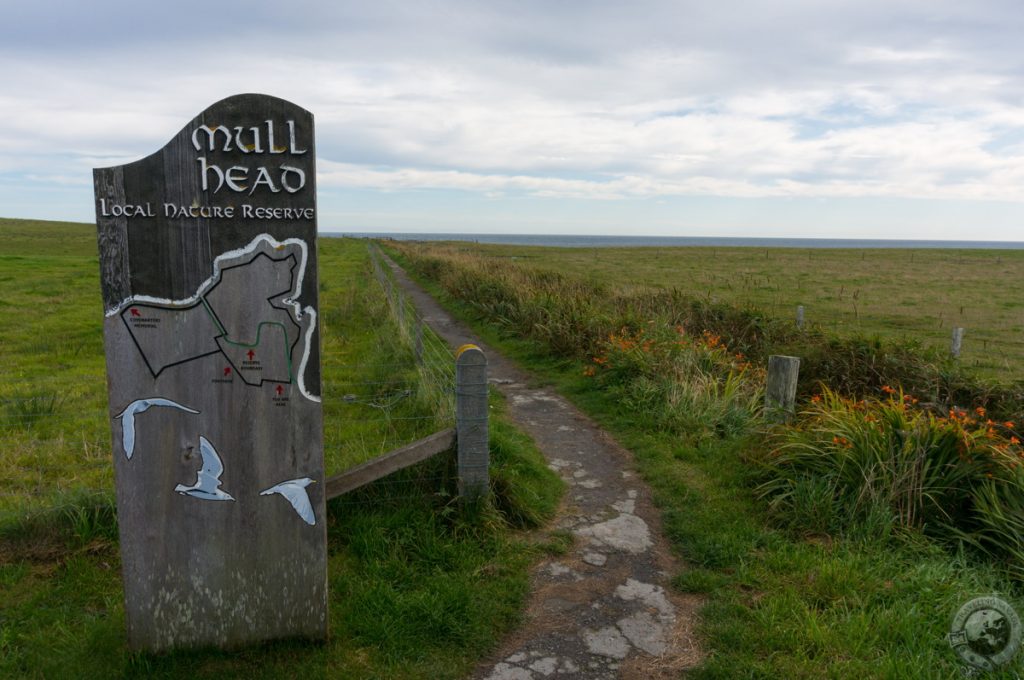
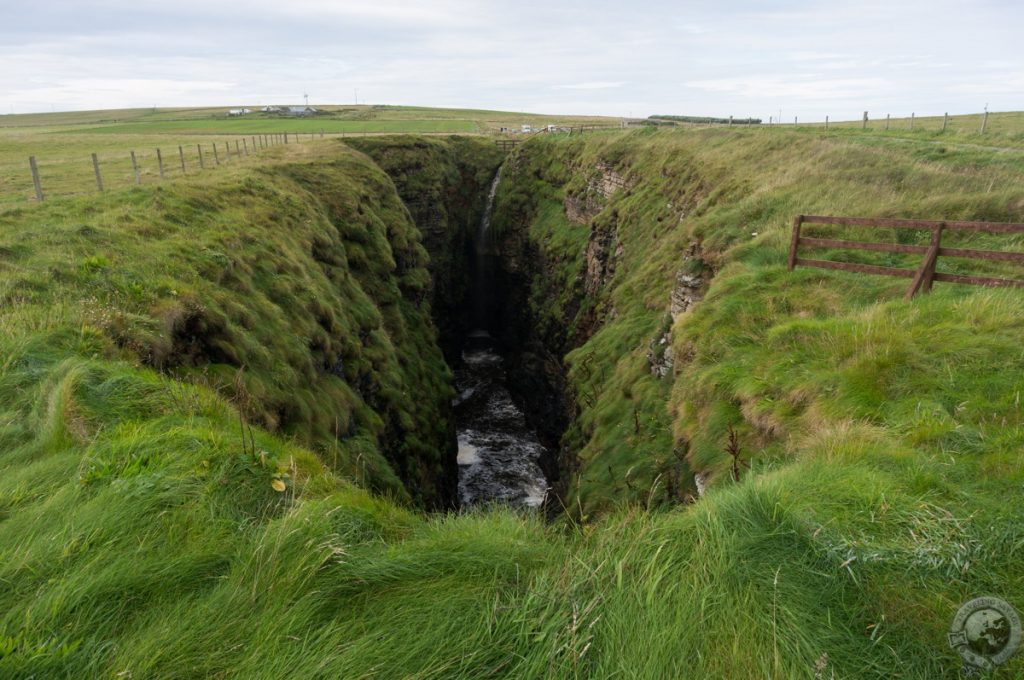
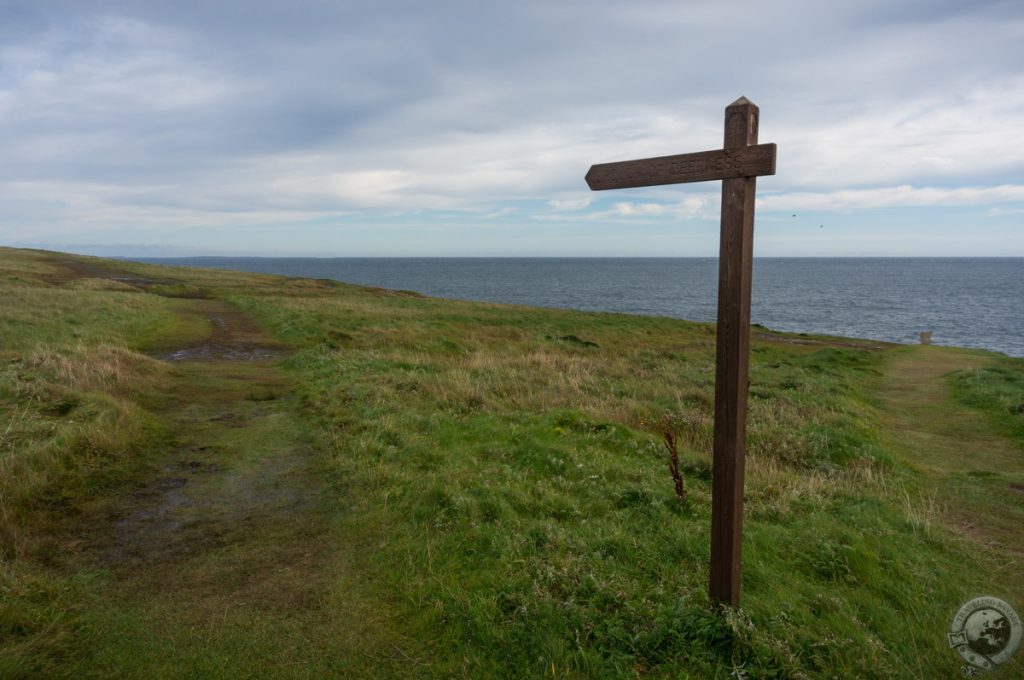
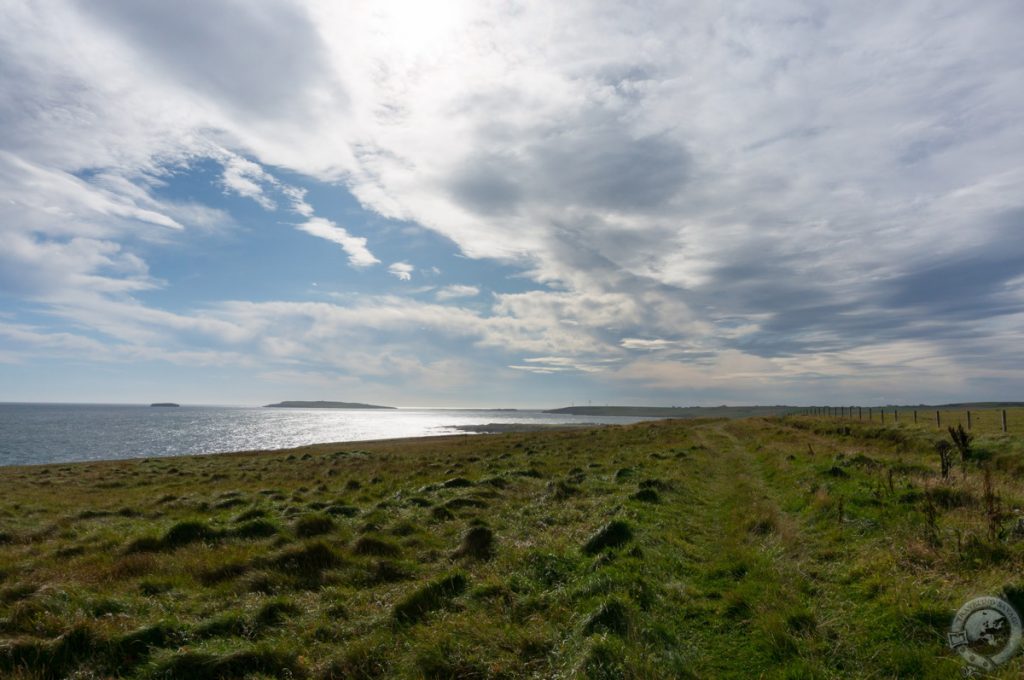
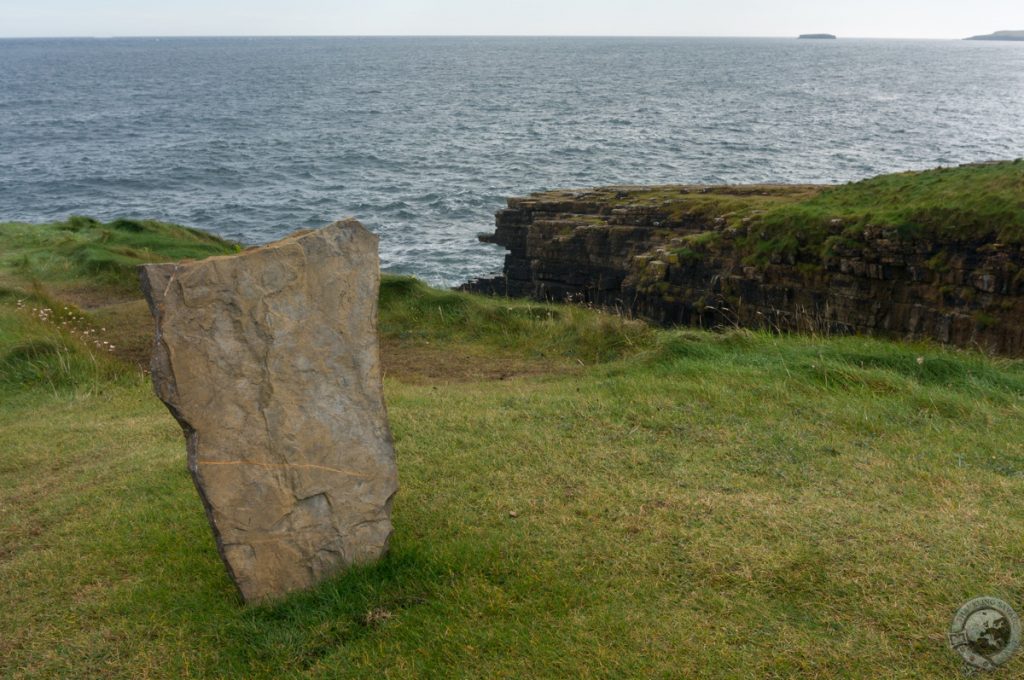
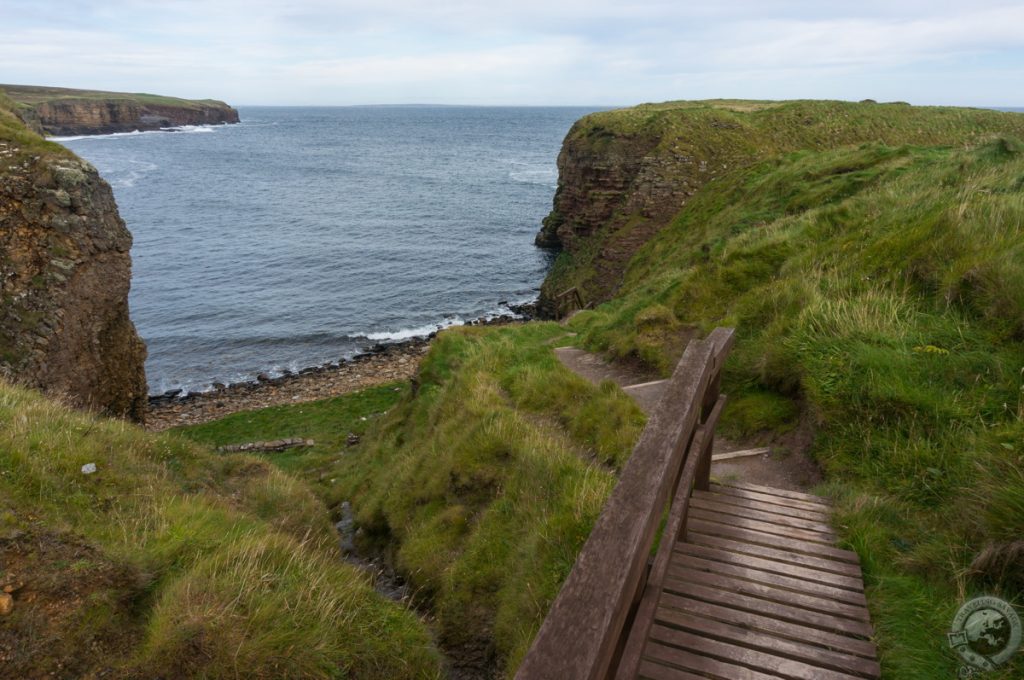
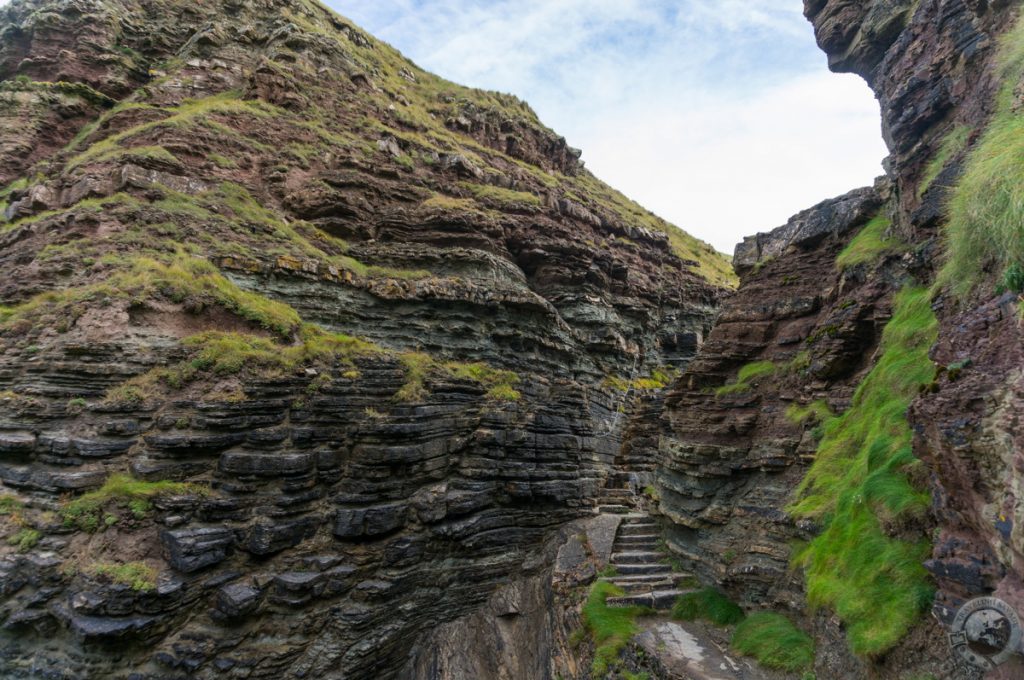
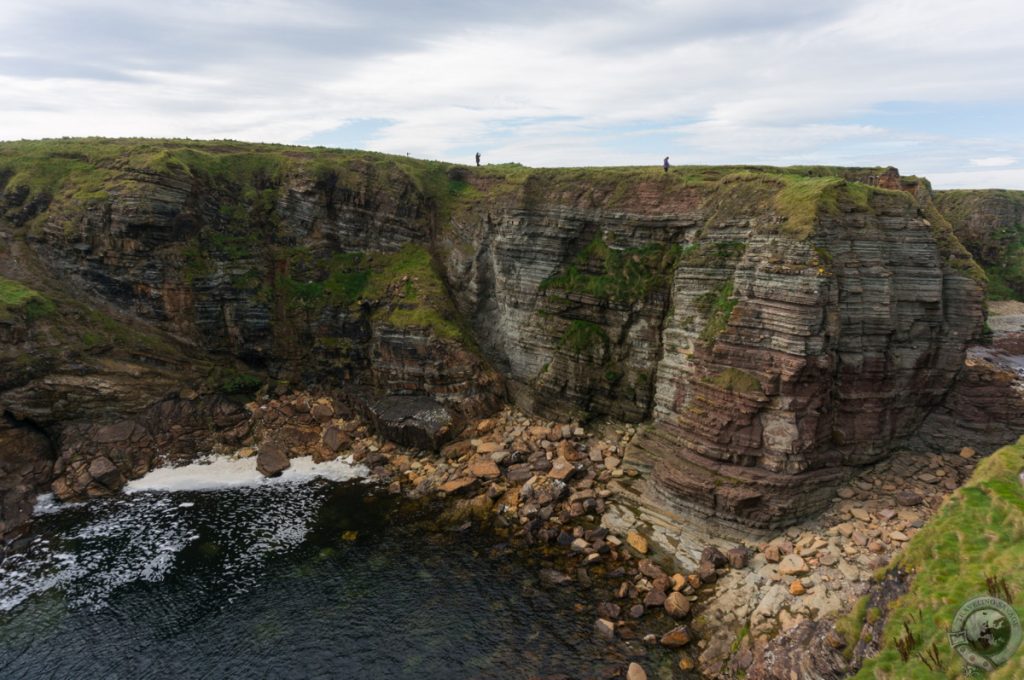
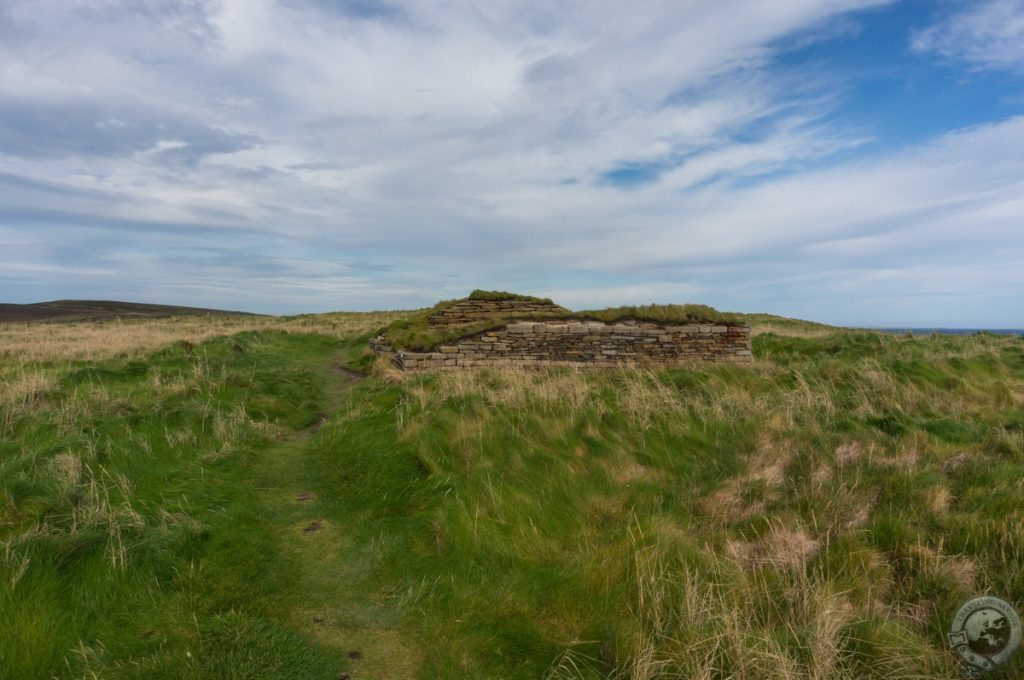
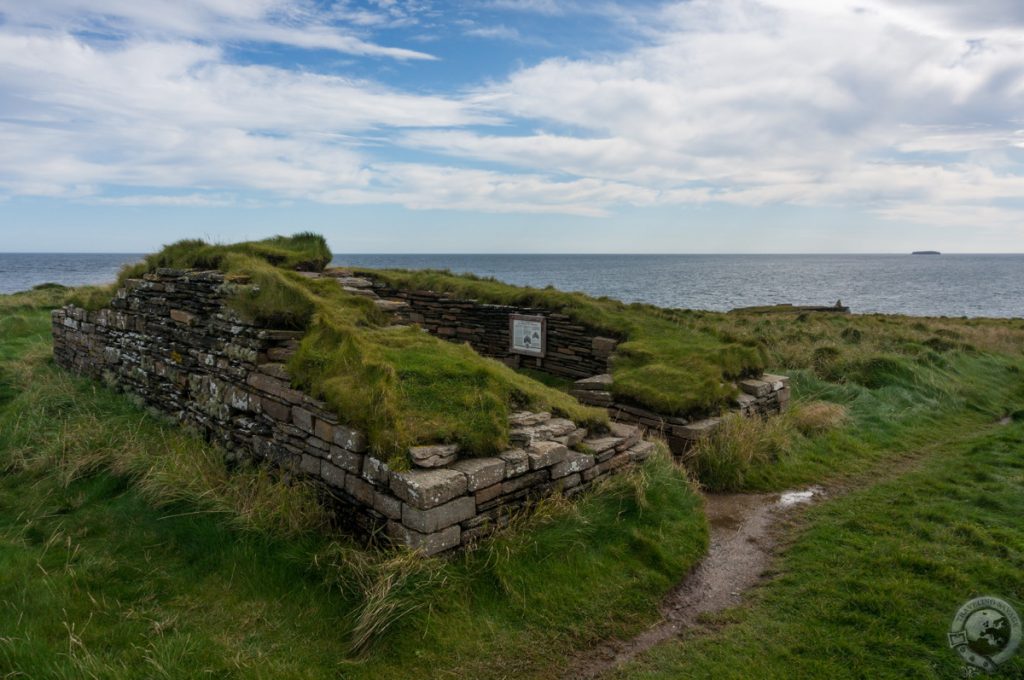
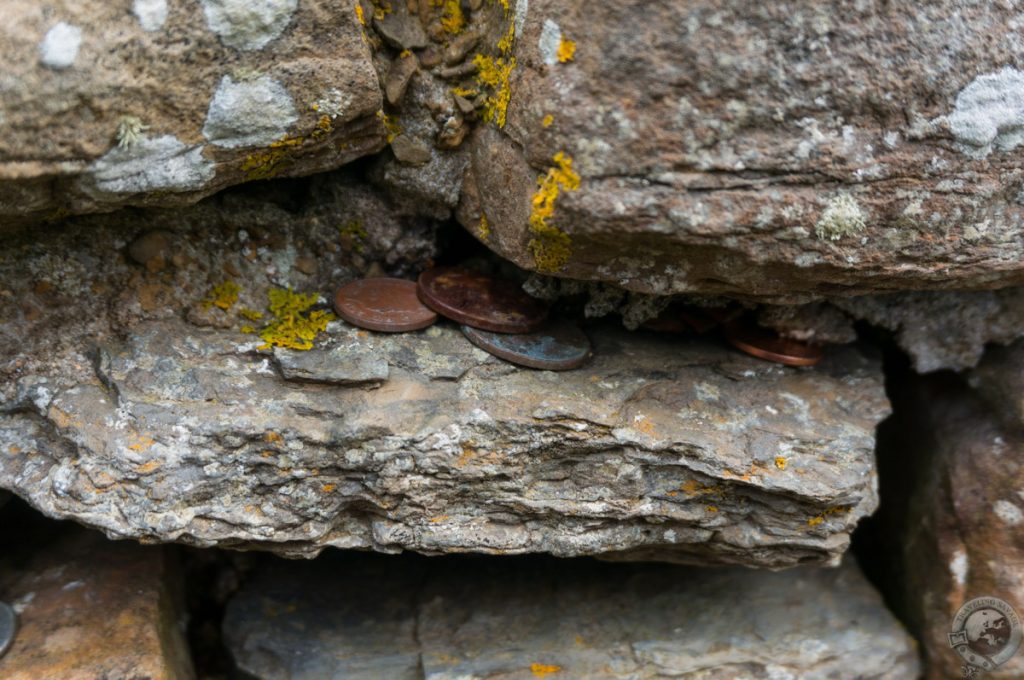
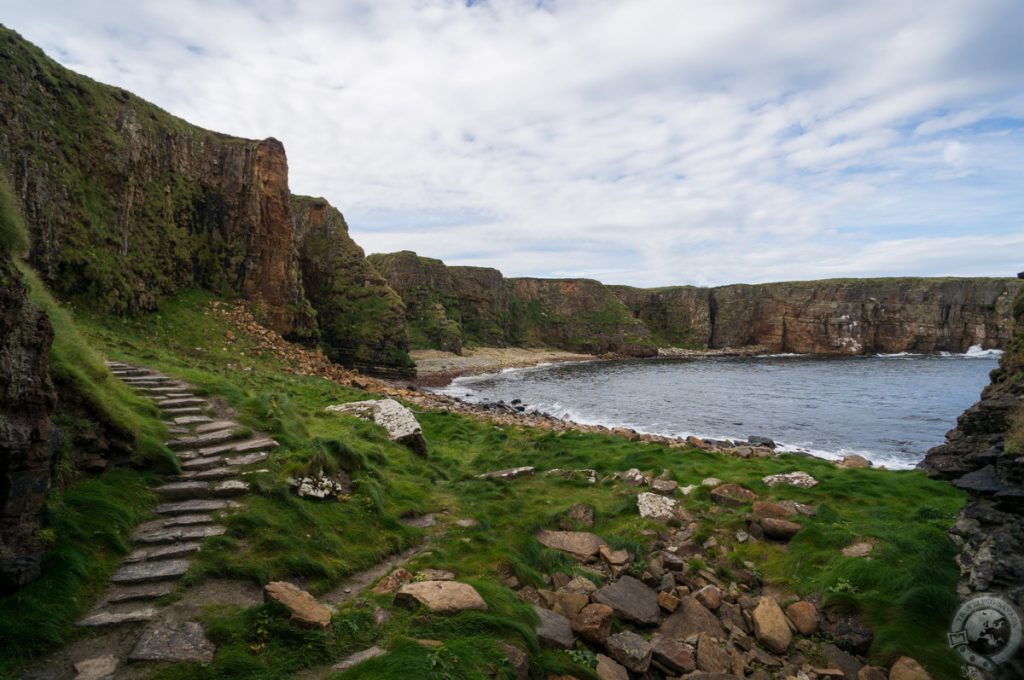
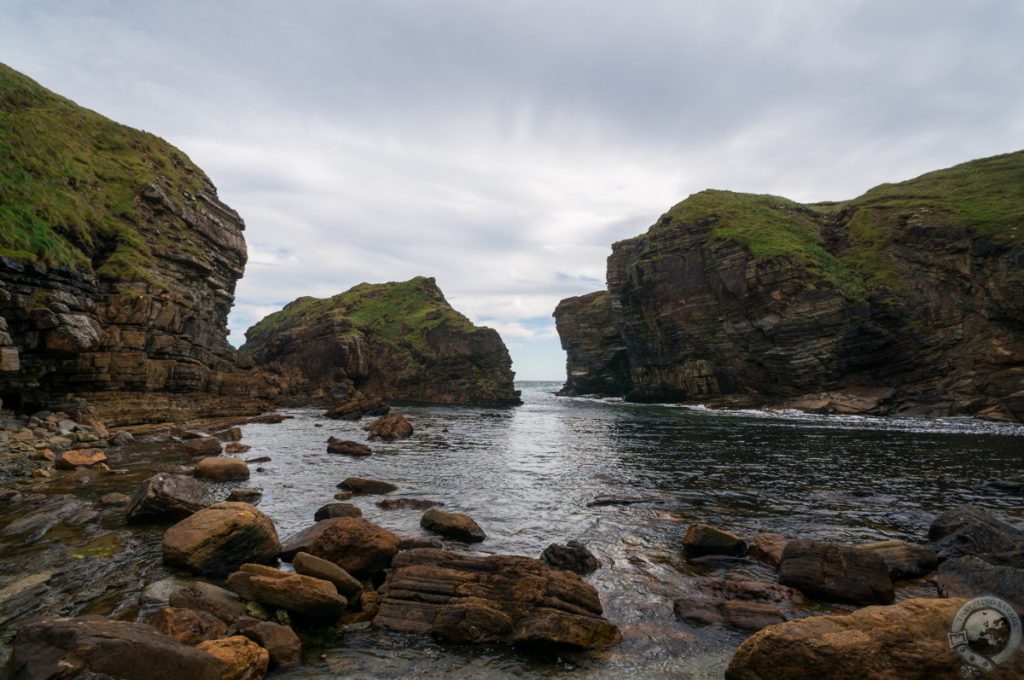
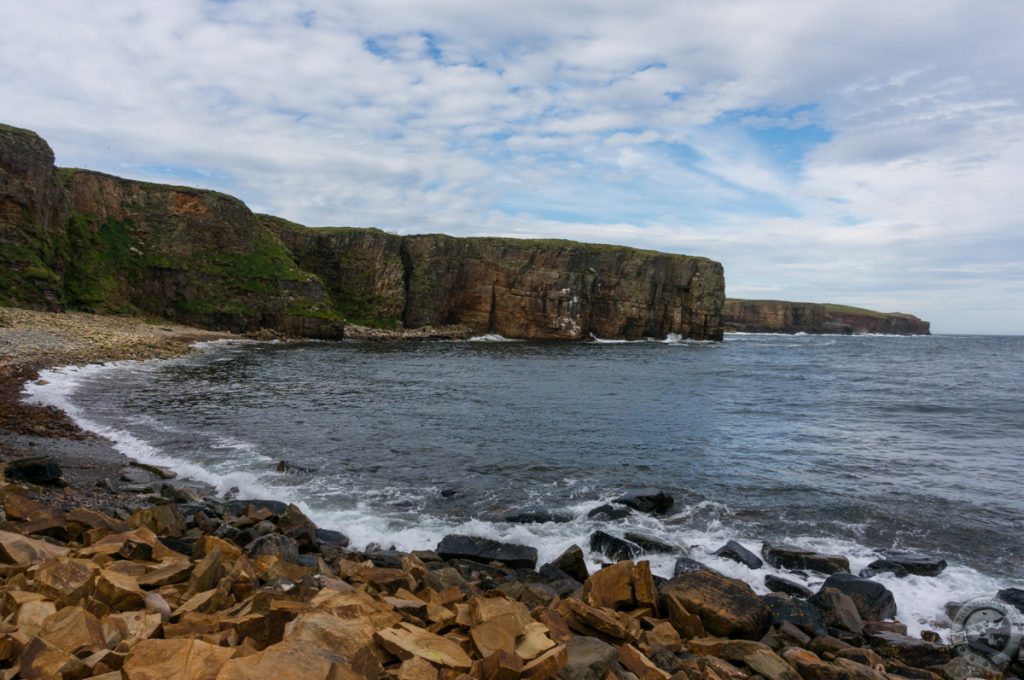
Thanks for your inspiring post. I have yet to visit the Orkney Islands, although they are on my ‘must visit’ list. We went to the Isle of Mull a couple of months back and that was very beautiful. I love the wild Scottish landscape. This year, we have another trip booked to Anguilla, but I would very much like to visit Orkney next year. My husband wants to see the Ring of Brodgar and other Neolithic remains, as he’s very into history. I’m quite happy to sit and admire the views!
I was born in 1939 in Springfield, Mass., USA. From research, it appears that my Scottish ancestry goes back to the Orkney Islands: Starting around 1774 when a William Dearness was born on Sanday, later married to Jean Murray of Stronsay. The first (of four) Peter Murray Dearness born 1816 on Eday. Then two more with that name born in New Brunswick, Canada, then myself here in US. I visited the Orkney Islands six years ago, and plan again in 2021?
I hope you get back there soon, Peter. Deerness is a pretty part of the Orkney mainland, too.